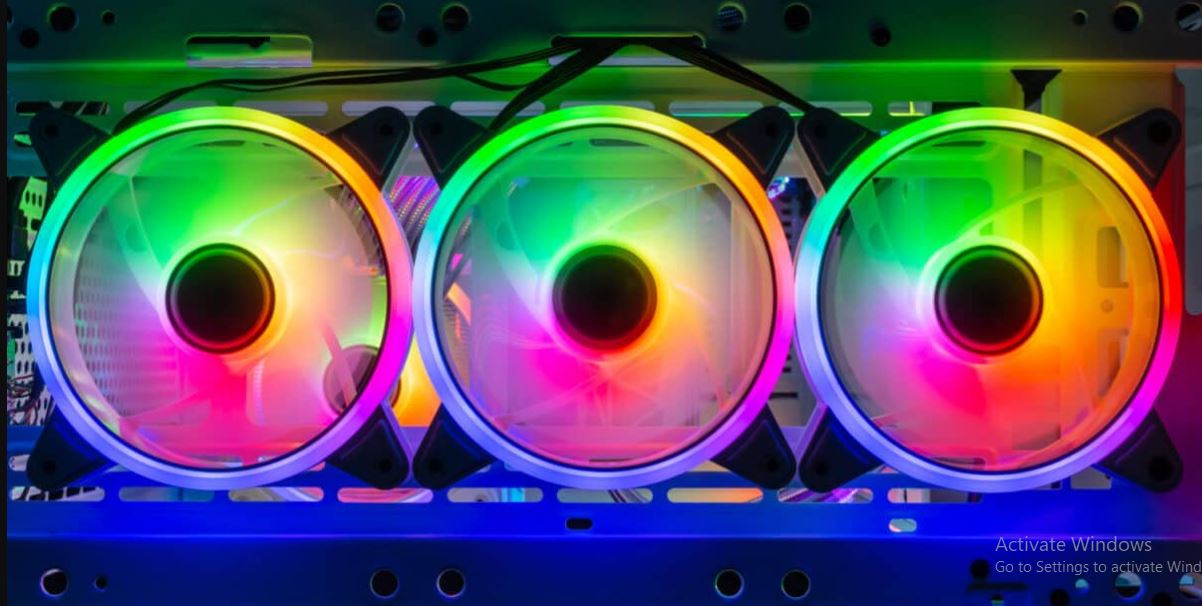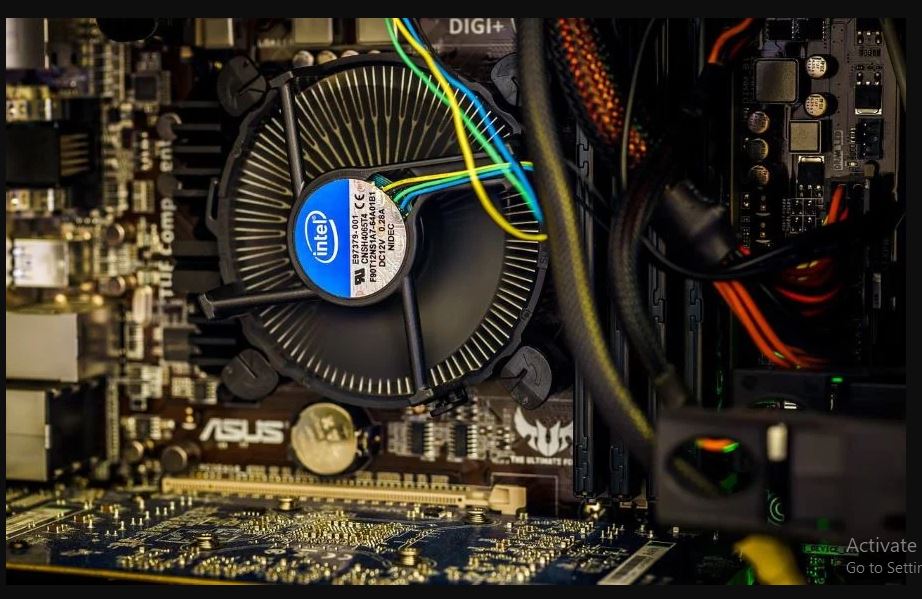Choosing the right cooling system for your PC is one of the hardest decisions that tech enthusiasts and gamers have to make. This dilemma arises because cooling significantly impacts the performance and longevity of your PC. In the world of computer cooling, two options stand out: the CPU opt and the CPU fan. So, CPU opt vs. CPU fan, what are the differences, and which is better for you?
A CPU opt is a 4-pin header used optionally to cool a PC, while a CPU fan is the primary cooling option for a PC. These two cooling systems have the same purpose: to keep your PC at an acceptable temperature to do its work.
Due to the fact that cooling is very important to most major PC users, most people prefer to build their own PC or augment their existing PC cooling system. If you are one of those people and are stuck on the two options of CPU opt and CPU fan, do not worry. This article will delve into the topic of CPU opt vs. CPU fan and help you make an informed decision.

What Is Cpu Opt
The CPU Opt, commonly known as the CPU optional fan header, is a header that allows you to connect an additional CPU cooling fan to your PC. It is an option for adding additional cooling to your system. It is often used together with the main CPU fan for high-performance systems.
CPU Opt offers you configuration flexibility to optimize your cooling setup. It is usually used for large PC heatsinks or to add an AIO cooling pump to your PC. Cpt Opt does not have integrated safeguards and so does not affect your booting process.
CPU Opt is a good option for cooling your PC, but you should also know that you cannot use it as the only cooling option. Instead, you can use it together with the main CPU fan. So, if CPU Opt is an optional header for cooling fans, What is a CPU fan?
What Is CPU Fan?
A CPU fan is a small fan within your CPU that is responsible for cooling the central processing unit. It is one of the most important heat-producing components in a computer. The CPU fan is mounted directly on top of or adjacent to the CPU, and there, it helps prevent overheating.
A CPU fan removes heat by blowing and drawing air over the CPU heatsink. This heatsink is a metal or aluminum block that helps remove heat faster. The airflow from the fan helps to carry away the heat from the CPU. This ensures that your PC operates within safe temperature limits.
Many CPU fans come with speed settings that allow you to control the fan speed. This setting helps the PC maintain optimal cooling while keeping the noise minimal. CPU fans are very critical for maintaining PC stability and performance.
Cpu Opt vs. Cpu Fan
The main difference between CPU OPT and CPU Fan is their intended purposes and functionalities on a computer motherboard:
CPU Fan:
- Purpose: The CPU Fan header or connector is specifically designed to connect the primary CPU cooling fan. This fan is primarily responsible for cooling the CPU.
- Functionality: The CPU Fan header is dedicated to monitoring and controlling the speed of the CPU cooling fan. It adjusts the fan speed based on the CPU temperature to ensure effective cooling.
- Typical Usage: You connect your main CPU cooler (usually an air cooler or liquid cooler with a fan) to the CPU Fan header.
CPU OPT (CPU Optional Fan):
- The CPU OPT header is an additional fan header that some motherboards provide for connecting an optional cooling fan. It’s often used to provide extra cooling support for the CPU or other components.
- Functionality: The CPU OPT header typically operates similarly to the CPU Fan header. It can monitor and control the speed of the optional fan, usually based on the CPU temperature.
- Typical Usage: You connect an additional cooling fan to the CPU OPT header, such as a second CPU fan or a fan for other motherboard components. This is especially useful for systems with more demanding cooling requirements.
While both the CPU Fan and CPU OPT headers are used for connecting fans, the CPU Fan header is primarily for the main CPU cooler, whereas the CPU OPT header is for additional fans to provide supplemental cooling.
The CPU OPT header is optional and may not be available on all motherboards. It’s typically used in more advanced cooling setups or high-performance systems where additional cooling is required to maintain lower temperatures.
Uses Of Cpu Opt
The “CPU OPT” (CPU Optional) header on a motherboard serves several purposes. The uses of CPU Opt include the following:
- One of the primary uses of the CPU OPT header is to provide additional cooling support for the CPU. You can connect an extra cooling fan, typically located near the CPU socket, to help dissipate heat more efficiently.
- While it’s named “CPU OPT,” you’re not limited to using it exclusively for CPU cooling. You can connect other fans to this header as well.
- Some users employ the CPU OPT header to create balanced airflow within the case. By placing an additional fan near the CPU area, you can ensure that cool air is directed toward the CPU cooler and other hot components, helping to maintain lower temperatures throughout the system.
- connecting a fan to the CPU’s OPT header can fine-tune its speed and performance. This can help you strike a balance between efficient cooling and low noise levels. Many motherboards offer fan control options in the BIOS or through software, allowing you to customize fan speeds based on temperature.
- Advanced users may sometimes use the CPU OPT header for custom cooling configurations. For example, they might connect it to a water pump for a liquid cooling system or to a fan controller for precise fan speed adjustments.
- The CPU OPT header provides flexibility for optimizing the cooling solution to match your system’s specific requirements and thermal characteristics. It can be particularly beneficial in systems where maintaining lower temperatures is critical, such as gaming PCs, workstations, or servers.
The exact capabilities and features of the CPU OPT header may vary depending on the motherboard model and manufacturer. It’s essential to consult your motherboard’s user manual and BIOS settings to understand how to configure and use the CPU OPT header effectively based on your specific needs.

Sys Fan Cha Fan
Sys fan and cha fan stand for system fans and chassis fans, which are components commonly found in a computer case.
System Fans are fans dedicated to cooling the overall system, including components like the motherboard, RAM, and graphics card. They help maintain a stable environment inside the computer case.
Chassis fans, also known as case fans, are responsible for cooling the interior of the computer case. They aid in dissipating heat from various components and guarantee proper airflow, both of which are essential for temperature control and overall system effectiveness.
Read: how to fix CPU fan error
Frequently Asked Questions
What’s The Difference Between System Fans And Chassis Fans?
System fans cool internal components like the CPU, motherboard, and GPU, while chassis fans specifically cool the interior of the computer case, ensuring proper airflow.
How Many Fans Do I Need In My Computer Case?
The number of fans required depends on your system’s components and desired cooling performance. Typically, having at least one intake and one exhaust fan is a good starting point. More powerful systems or those in compact cases may benefit from additional fans.
Should I Use Air Cooling Or Liquid Cooling For My CPU?
This choice depends on your specific needs. Air cooling is cost-effective and suitable for most users. Liquid cooling can provide better cooling performance but can be more expensive and complex to install.
How Do I Control The Speed Of My Fans?
You can control fan speed through the motherboard BIOS or using fan control software. Some motherboards offer automatic fan speed adjustments based on temperature, while others allow manual customization.
Are There Any Guidelines For Fan Placement In My Case?
It’s generally recommended to place intake fans at the front or bottom of the case to bring in cool air and exhaust fans at the rear or top to expel hot air. However, case design and component layout may influence optimal fan placement, so consult your case manual for specific recommendations.
Conclusion
The topic of CPU opt vs. CPU fan relies on their essential roles in your computer system. They both play a role in maintaining optimal thermal conditions. While the CPU fan is the main CPU cooling unit, the CPU Opt allows you to add an additional cooling system.
If your question is which of the CPU cooling methods is better, then you should know that the CPU fan is the most important. If your CPU fan is not working properly, you may not be able to boot your phone. This article has explained CPU opt vs. CPU fan; now you know what to do.
